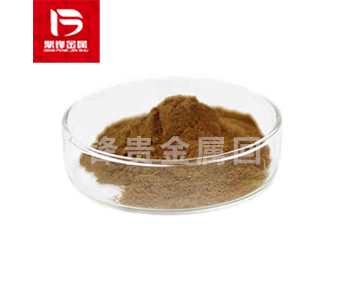
Osmium Oxide Recycling
Osmium oxide (OsO₄) is the most common oxide of osmium, and usually appears as a colorless or pale yellow crystalline powder. It is a highly toxic and volatile compound with strong oxidizing properties. Waste osmium oxide is one of the raw materials for osmium waste recycling. Osmium waste recycling also includes osmium-iridium alloy recycling, osmium alloy recycling, osmium powder recycling, osmium pellet recycling, ammonium chloroosmite recycling, and osmium target recycling.
- Parameter
- Related Questions and Answers
-
Name : Osmium oxide
-
Use : Organic synthesis, chemical analysis, catalytic reactions, etc.
-
Application Areas : Catalyst field, laboratory, chemical industry, etc.
-
Appearance and properties : Colorless or pale yellow crystalline powder
-
Settlement Method : On-site payment
-
Recycling Type :Osmium recycling
-
Door-to-door recycling:worldwide
-
Customer service: Free content testing and door-to-door recycling
Osmium Oxide Recycling
Osmium oxide (OsO₄) is the most common oxide of osmium, and usually appears as a colorless or pale yellow crystalline powder. It is a highly toxic and volatile compound with strong oxidizing properties. Waste osmium oxide is one of the raw materials for osmium waste recycling. Osmium waste recycling also includes osmium-iridium alloy recycling, osmium alloy recycling, osmium powder recycling, osmium pellet recycling, ammonium chloroosmite recycling, and osmium target recycling.
Search : Osmium Oxide RecyclingOsmium Powder Recycling
Osmium powder is a fine granular material made from osmium metal by special methods such as high-temperature reduction and mechanical grinding. Waste osmium powder is one of the raw materials for osmium waste recycling. Osmium waste recycling also includes osmium-iridium alloy recycling, osmium alloy recycling, osmium target recycling, osmium block recycling, osmium particle recycling, osmium ingot recycling, osmium powder recycling, osmium oxide recycling, etc.
Search : Osmium Powder RecyclingOsmium Alloy Recycling
Osmium alloys are alloys composed of osmium and other metallic elements such as platinum, iridium, and palladium. Waste osmium alloys are one source of osmium waste recycling. Other sources of osmium waste recycling include osmium powder recycling, osmium pellet recycling, osmium block recycling, osmium target recycling, and osmium iridium alloy recycling.
Search : Osmium Alloy RecyclingAmmonium Chloride Recycling
Ammonium hexachloroosmate is an osmium-containing compound with the chemical formula (NH)[OsCl]. It is an ammonium salt formed by the reaction of osmium metal with hydrogen chloride and ammonium chloride, and usually appears as a reddish-brown or orange-red crystalline powder. Discarded ammonium chloroosmate is one of the raw materials for osmium waste recycling. Osmium waste recycling also includes osmium powder recycling, osmium iridium alloy recycling, osmium alloy recycling, osmium particle recycling, osmium target recycling, osmium chloride recycling, etc.
Search : Ammonium Chloride RecyclingProduct Details
Osmium oxide (OsO₄) is the most common oxide of osmium, and usually appears as a colorless or pale yellow crystalline powder. It is a highly toxic and volatile compound with strong oxidizing properties. Osmium oxide has important applications in organic synthesis, chemical analysis, and catalysis, especially as a catalyst and catalyst precursor. It is often used in selective oxidation and hydrogenation reactions in organic reactions and special chemical syntheses. Osmium oxide is usually obtained by reacting osmium metal with oxygen in the manufacturing process. Due to its extremely high toxicity and volatility, special care must be taken when using it, and it is usually operated under strictly controlled laboratory conditions.
There are mainly the following methods for producing osmium oxide:
1. Osmium metal and oxygen reaction method: In this method, osmium metal (Os) reacts directly with oxygen to form osmium oxide (OsO₄). This reaction is usually carried out at high temperatures and requires exposing osmium metal to an oxygen atmosphere. The chemical formula for the reaction is 2Os + 5O₂ → 2OsO₄. Because osmium oxide is a volatile compound, the reaction must be carried out in a closed system to prevent osmium oxide leakage. Although this method is straightforward and simple, osmium metal is rare and expensive, making it unsuitable for large-scale production.
2. Osmium oxide can be effectively synthesized by reacting osmium salts (such as osmium chlorate or osmium nitrate) with a strong oxidizing agent. For example, if an osmium salt is dissolved in a solvent and then an oxidizing agent such as hydrogen peroxide (H2O2) is added, the osmium ions will be oxidized to higher valence osmium oxide by the action of the strong oxidizing agent. The advantage of this method is that it can produce osmium oxide with relatively high purity and can be carried out under mild conditions. The osmium oxide produced by the reaction is often a white or pale yellow solid with high catalytic activity.
4. Osmium salt solution and strong oxidizing agent method: In this method, osmium salts (such as osmium chloride or osmium nitrate) are dissolved in an aqueous solution, and a strong oxidizing agent such as hydrogen peroxide (H2O2) is added to promote the oxidation reaction to produce osmium oxide. This method is particularly suitable for laboratory conditions where the reaction conditions can be precisely controlled. High-purity osmium oxide can be obtained by adjusting the solvent, oxidizing agent concentration, and reaction temperature. After the reaction is completed, osmium oxide is usually filtered, evaporated, or crystallized to obtain pure products. This method is highly selective, and the purity of the osmium oxide produced is also high.
Waste osmium oxide is one of the raw materials for recycling osmium waste. Recycling of osmium waste also includes recycling of osmium-iridium alloys, recycling of osmium alloys, recycling of osmium powder, recycling of osmium pellets, recycling of ammonium chloroosmite, and recycling of osmium targets. If you need to recycle osmium-containing waste, please contact our 24-hour service hotline. Dingfeng Precious Metals Recycling Refinery has its own recycling refinery, which does not have any middlemen to make profits from price differences, and has a professional technical team and customer service staff to provide one-to-one service and ensure customer privacy during the recycling process.

